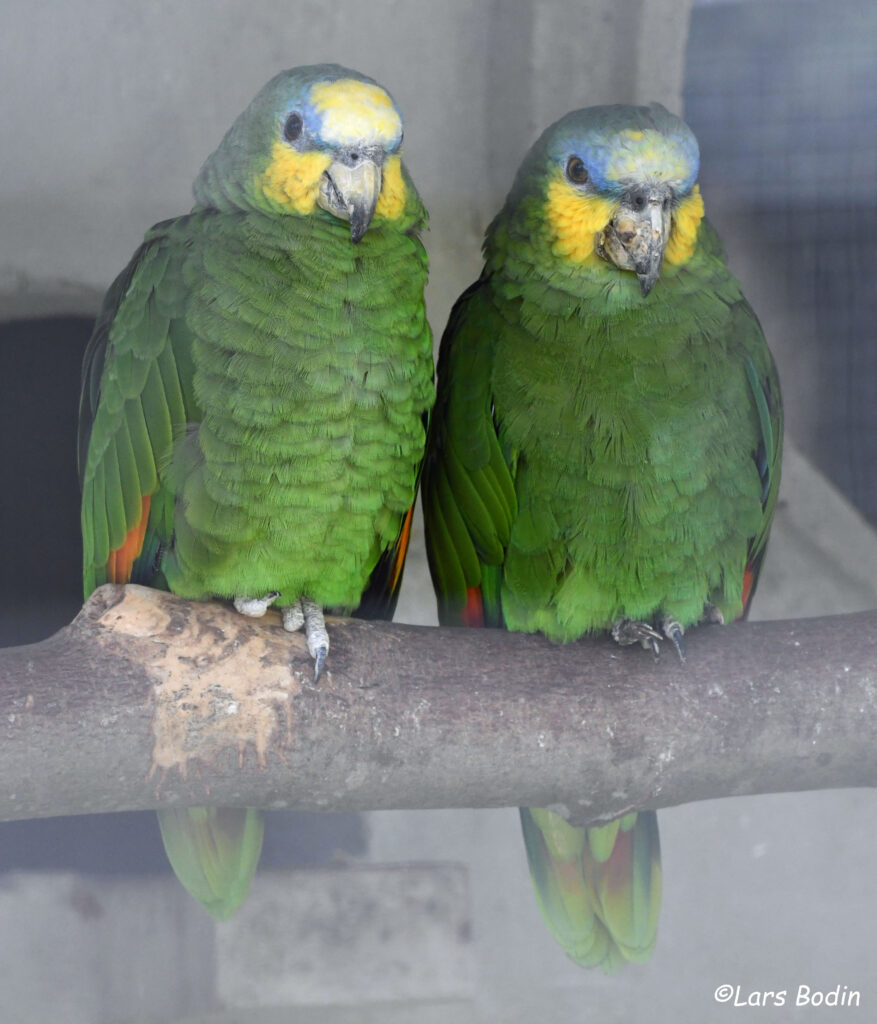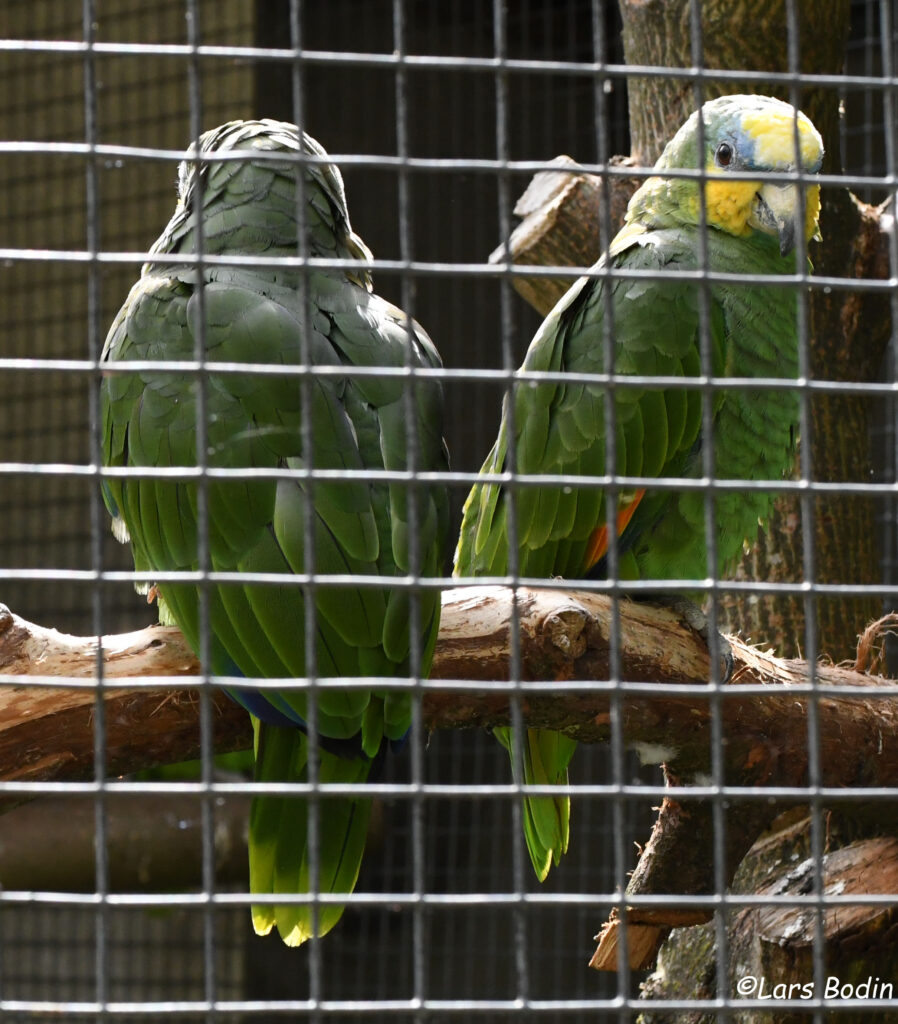Amazona amazonica – Orange-winged Amazon
Taxonomy
- Order: Psittaciformes
- Family: Psittacidae
- Genus: Amazona
Synonyms
- Danish: Venezuela-amazone
- English: Orange-winged Amazon, Orange-winged Parrot, Common Amazon Parrot
- French: Amazone à ailes orange, Amazone aourou
- German: Venezuelaamazone
- Portuguese: Airu-curuca, Ajuru-catinga, Ajuru-curau, Ajuru-curuca, Curau, Curica, Curuçá, Papagaio-do-mangue, Papagaio-grego, Papagaio-poaieiro
- Spanish: Amazona Alinaranja, Amazona Guaro, Cotorra Alianaranjada, Lora Amazónica, Loro Real
- Scientific: Amazona amazonica
Orange-winged Amazon – Amazona amazonica (Linnaeus, 1766) – is quite common in captivity. With proper care it can reach a lifespan of 50-60 years.
Even though they are smaller, they can be just as noisy as the larger amazons. They are however not as skilled at imitating human speech as some of the other amazon species.
Some sources claim the Orange-winged Amazon consists of two subspecies A.a. amazonica and A.a. tobagensis but this is not recognized by IOC.
They are listed on CITES Appendix II.
Description
Overall green plumage with yellow forehead, crown and forecheeks; lores and band between eyes are violet/blue; the throat is yellow/green tinged with blue; the central tail feathers are green, the side tail feathers are green with tipped with yellow/green. During flight orange colors on wings and tail are visible. The eyes are orange with grey/white eye ring. The beak is horn colored with dark grey tip.
Juveniles has grey/brown eyes and grey/white eye ring.
Size: 31-33 cm
Weight: 298-470 g
Subspecies
None
Habitat
The natural habitat ranges from Colombia, Venezuela and the Guianas to Bolivia, south-central Brazil and south-eastern Brazil.
They prefer lowland forest and wooded country near water but may also visit urban areas. Usually seen below 600m but have been spotted up to 1200m.
They are often seen in flocks with up to 50 birds but also larger flocks are seen. Roosts communally.
Diet
Wild birds feed on palm fruits from Byrsonima, Richeria and Sloanea and other fruits and plants. If the preferred food is scarce they may also visit cultivated areas and feed on mango and oranges.
Use high quality pellets and also provide plenty of fruits and vegetables and supplement with a high quality seed mix. The diet can include: apple, cactus fruits, orange, pear, pomegranate, carrots, celery, green peas and beans, corn, dandelion, lettuce, Swiss chard and spray millet.
Aviculture
The aviary should have a minimum length of 3 m. Make sure the birds have access to an isolated and heated shelter with a temperature of at least 5°C during winter season or keep them indoor.
A vertical box about 30 x 30 x 60 cm is used as nest box.
The clutch contains 3-4 eggs that are incubated for 25 days; the chicks reach fledging age after 8 weeks.
IUCN Red List

BirdLife International 2018. Amazona amazonica. The IUCN Red List of Threatened Species 2018: e.T22686350A131920257.
https://dx.doi.org/10.2305/IUCN.UK.2018-2.RLTS.T22686350A131920257.en
Downloaded on 9 July 2021


